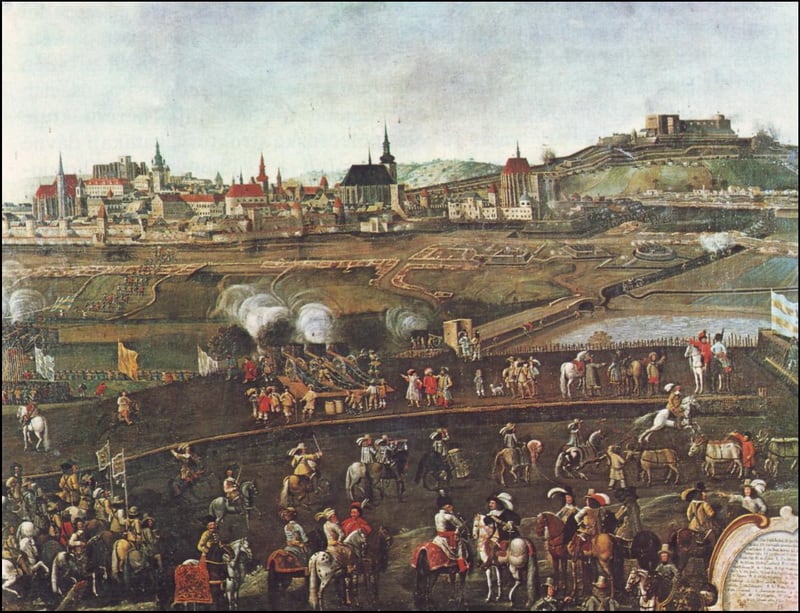The siege of Brno lasted over three months. The locals did not give up even in the most difficult moments and sang mocking songs on the walls. The enemy in the form of the Swedish army arrived at the gates of the city on May 3, 1645.
It was a force under the command of Swedish General Lennart Torstenson. It was only a vanguard, the rest of the army arrived the following day. Torstenson first sent a negotiator to the walls to urge the enemy to surrender. The then commander of Brno, Jean Louis Raduit de Souches, refused the Swedes' demand.
"Ferdinand III himself appointed the thirty-seven-year-old French Huguenot to lead the city on 15 March 1645. If anyone in the monarch's entourage had any doubts, either about the faith or the nationality of the new commander of the Moravian capitalthe monarch is said to have pronounced that the devil could only be exorcised with the help of Beelzebub," writes Michael Weber in his book Demons of the Apocalypse.
The Swedes launched their first attack to test the city's defences on 5 May 1645. At the same time they began to blast the walls of Brno and Špilberk. Torstenson began to admit that the conquest of the city would not be as easy as he had imagined. The first attack was fought off by the enemy. The Swedish general called for an intensive siege. His soldiers began digging basic trench lines around the fortress and minefields. The Swedish army, reinforced by the corps of Duke Rakoczi of Transylvania, numbered around 30,000 men.
The defenders also acted actively against the enemy and launched several sorties. "On 15 May, for example, they took the Swedes by surprise and inflicted considerable losses on them. A similarly successful raid was made on 26 May. Small or large successful raids were made by the defenders innumerable times. The defenders attempted to damage as much as possible the approach trenches of the Swedes, to hammer or otherwise damage siege guns, to destroy material needed for the construction of thedigs, take the prepared basketry to the town, steal supplies or take away horses and cattle," describes historian Zdeněk Munzar, who works at the Military Historical Institute in Prague.
The siege lasted over three months. Twelve-year-old children volunteered, women helped and priests encouraged. The Brno people did not relent in their determination and some even managed to mock the enemy in difficult moments. They played on the walls and sang mocking songs. They had to save gunpowder and often threw stones at the enemy. The women would go to nearby gardens and fields for vegetables when the fire was full, and even managed to drive a cow into town. After one such raid, a student was left lying in a ditch among the troops with a wounded knee. The Swedes threw stones at him for the rest of the day, and at night they stripped him of his clothes, gouged out his right eye and stuck a spear in his stomach.
The decisive battle began on August 15, 1645. The Swedes were unsuccessful, the Brnoers repelled all attempts to capture the city. Torstenson was recalled to Sweden for another mission. The fighting officially ended on 23 August 1645.
Sources:Michael Weber: Demons of the Apocalypse,www.vhu.cz,Jan Kvirenc: Czech History - 100 Memorable Places,https://ticbrno.cz/














